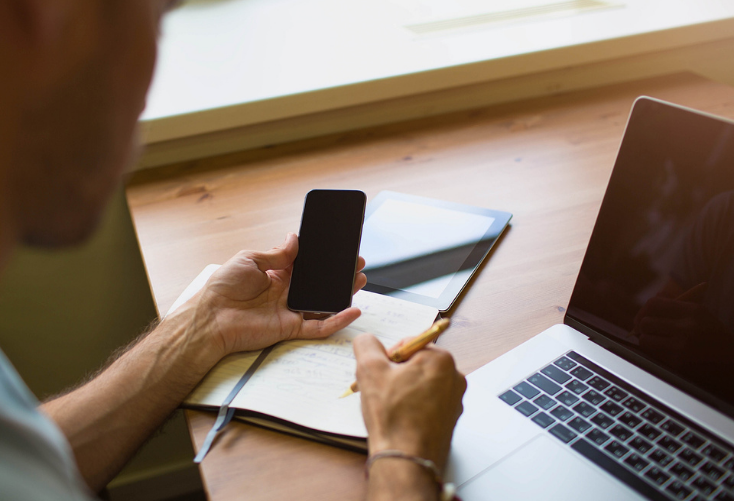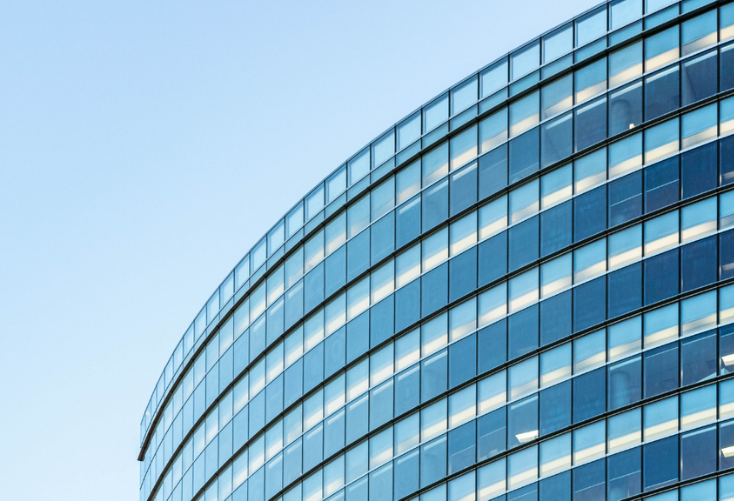Hand selected flexible workspace news from the most reliable sources to keep you ahead of the pack. We find all the latest news, so you don’t have to. Morning and afternoon updates. Stay in the know.
- What The Future Of Work Means Now NEW
- Creating An Effective Hybrid Workforce NEW
- The Increase Of The Digital Nomad Population NEW
- Common Desk Focuses On Employee Morale
- Hub-and-spoke Models Are On The Uprise
- What A Post-pandemic Office Could Look Like
What The Future Of Work Means Now
The US is experiencing an uptick in coronavirus cases as states move forward with reopening strategies. Now, as the country surpasses 185,000 deaths and nearly 6 million confirmed cases, companies may need to rethink what it means to “return to normal.”
Large technology companies like Google have preeminently announced they would be allowing employees to work from home until at least 2021, while Apple revealed it would be requiring temperature checks and limited capacity for office reentry.
While the reality that we may never work the same can be daunting, it may be comforting to think that the pandemic as a catalyst of this change, not the source. Experts on the future of work have long predicted the shift to a more flexible, remote workforce, but it happened quicker than anticipated.
So how can we businesses prepare for the long-term and accommodate the evolving needs of both employees and clients?
First, it is vital to understand that a work environment is not one-size-fits all. Workers require varying spaces, whether it be a private office for individual work or a conference room for brainstorming sessions. Not only will the physical workspace itself be flexible, but benefits and hours will be too.
Additionally, the implementation of technology will be crucial to operating in a modern workplace. With many companies opting for a hybrid work arrangement, the use of technology-fuelled satellite offices outside of major cities will serve as a place that nurtures culture and productivity.

Creating An Effective Hybrid Workforce
Companies have begun planning how to approach operations as the pandemic rages on. Many have allowed employees to work remotely for the foreseeable future, while others have slowly started to bring workers back into the office.
In order to meet the constantly evolving needs of today’s workforce, companies should look into a hybrid work arrangement. This provides the benefits of both remote and in-office working with the appropriate planning and communication.
Axel Hefer, CEO of travel company Trivago, says that remote working has been highly effective for the company, but that something has been missing. That is why the firm will be experimenting with a hybrid model.
“We are now benefiting from the human capital we have built up over the years by spending a lot of time together. That cannot continue forever,” said Hefer. “We will collect feedback and see what has worked well and what hasn’t and then do something slightly different. It could take years to find the right balance that works to get the best of both worlds.”
To create this perfect balance, business leaders need to communicate with their employees and receive feedback on what works best. For instance, ask where employees want to work, what they want their schedules to look like and plan your operational strategy from there.
Managers also need to be clear about their goals and expectations for their workers, while employees should be transparent about how much they are working and their availability. Overall, communication is key.

The Increase Of The Digital Nomad Population
Several countries across the world have enacted some sort of travel restriction in an effort to mitigate the spread of COVID-19. Now, some have eased these limitations despite the number of cases climbing in certain areas.
The impact this has had on the travel industry has been detrimental to say the least, but some places have found a way to welcome working travelers into their countries in a safe way.
Barbados, for instance, has launched its “Barbados Welcome Stamp” program that allows visitors to come and work remotely in the country for up to a year. Prime Minister Mia Mottley said that this visa derived from wanting to bring visitors into the country without the stress of time-consuming quarantining and testing. Other countries have introduced a similar program, such as Bermuda, Estonia and Georgia.
This move will likely have a major impact on the digital nomad population, who are traditionally younger workers who travel and work from wherever they want. With remote working officially hitting the mainstream, it is clear that these two worlds will collide.
Companies small and large have adopted remote working policies indefinitely, which opens up the opportunity for more professionals to travel while working.
Ultimately, the potential boost in digital nomads will depend on how companies adapt to flexibility in the future. If the expansion of remote working options from major companies like Google and Twitter indicate anything, flexible working is here to stay.

Common Desk Focuses On Employee Morale
Dallas-based coworking operator Common Desk is continuing on with its pledge to provide hospitable and authentic services for professionals despite the ongoing pandemic.
For now, the company has moved its events online in order to keep entrepreneurs connected and nurture their community for members. Nick Clark, founder of Common Desk, added that by doing this, his staff saw an uptick in morale that has brought them closer together.
“I think the most dangerous thing with COVID as a brand is all it takes is one mistake because we’re dealing with people’s lives when it comes to a pandemic, and very much so we feel responsible for people,” said Clark. “So we took the approach of saying, ‘let’s put safety first and foremost, we will have to close down our spaces. What we can do is provide resources and community for entrepreneurs.”
Clark said that his teams are continuing to have weekly Zoom meetings for business-related discussions, as well as online happy hours to keep workers engaged.
However, like many workers who have recently transitioned to remote positions, employees have expressed issues of overworking, so Clark and his team have been encouraging them to take time off.
“We’ve been keeping a very close pulse in our company’s morale,” said Clark. “We’ve created a survey that goes out to all of our members and it really helps us gauge what leadership is getting something wrong or when we communicate something incorrectly.”

Hub-and-spoke Models Are On The Uprise
As businesses look to welcome workers back into the physical workspace, many are exploring the hub-and-spoke model to maintain low real estate costs, while keeping employees safe.
Jennifer Frisk, senior managing director at Newmark Knight Frank’s downtown Los Angeles office, explains that this model could provide a lot of opportunity for cities where public transit is essential, such as New York and San Francisco.
“It’s a little bit easier in Los Angeles because you’re getting in your car, whether it’s to go five minutes or 45 minutes,” said Frisk. “The hub-and-spoke model doesn’t solve for that as much as it does in those cities that are relying on public transit.”
However, Frisk added that this new strategy will likely serve all types of cities as companies look more into flexible arrangements for the foreseeable future.
According to Frisk, flexibility is not going anywhere, but will not be executed in the way we once pictured it. Shared kitchens and conference rooms are not ideal in a post-pandemic world, but with the right reconfigurements, flexible workspaces could help accommodate workers who want a physical office to get away from distractions at home.
While it is clear that many professionals have the ability to work from anywhere, when it comes to collaboration, individual work and bringing teams together, offices will always be crucial.

What A Post-pandemic Office Could Look Like
Building owners and architects are having to shift their bottom-line in the wake of the ongoing COVID-19 pandemic. Instead of offering lavish workspaces that feature shared kitchen amenities and breakout areas with foosball tables, companies need to focus on how to make the workplace safe and healthy.
According to Jack Paruta, senior project architect at Gensler, their research has totally shifted to focus on how to help clients and employees navigate the pandemic. This includes allowing workers in regions that have experienced a spike in cases to work from home.
Over the past few years, the commercial real estate industry has become increasingly focused on being more sustainable and energy efficient, and it appears that the pandemic may be accelerating these goals. With buildings seeing low occupancy rates and commutes decreasing, carbon footprints have also lessened.
Moving forward, owners and tenants will need to focus on how to reconfigure spaces that accommodate physical distancing needs. This includes reevaluating how to place furniture, establish new circulation patterns and encourage people to use stairs rather than elevators.
“The incorporation of new mechanical systems featuring improved airflow and more effective filters will also be required by building users,” said Tom Usher, executive managing director at Cushman & Wakefield. “Touchless technologies will be incorporated where possible. We also anticipate that companies will right size their spaces and plan for staggered work schedules for employees.”
Additionally, Paruta believes that there will be a growth in the suburban office market as companies look into providing space for workers closer to their homes, while reducing the density of their central offices.



 Dr. Gleb Tsipursky – The Office Whisperer
Dr. Gleb Tsipursky – The Office Whisperer Nirit Cohen – WorkFutures
Nirit Cohen – WorkFutures Angela Howard – Culture Expert
Angela Howard – Culture Expert Drew Jones – Design & Innovation
Drew Jones – Design & Innovation Jonathan Price – CRE & Flex Expert
Jonathan Price – CRE & Flex Expert















